This dictionary was designed to give legal technology users of every experience level confidence and grace when using legal technology terms. For those new to the technologies these explanations will help ease them into their jobs. For experienced users, the updated definitions can add depth and context to technologies already in use.
Use this guide as a non-technical, fun and easy read that will allow you to feel comfortable whenever you find yourself in the deep end of the tech pool.
Table of Contents
eFiling Definitions
Acceptance Rate n.
1. Percentage of a law firm’s electronic court filings (eFilings) accepted by the court. This number is expressed as a percentage of the total number of eFilings a firm submits to the court, usually via an electronic filing service provider. 2. If your firm’s acceptance rate is below 90%, contact your eFiling provider and ask how they can help you improve it.
1. A service typically provided by a legal support service vendor. Concierge service consists of an expert document specialist who reviews your documents and places your firm’s file or serve order on your behalf. 2. Also, the magical arts performed by hotel desk staff that make impossible guest requests possible. In the film Pretty Woman, Julia Roberts would have been toast without concierge service.
Court eFiling Coverage n.
1. The number of court jurisdictions for which an eFiling service provider or EFSP facilitates electronic court filing. 2. Savvy law firms select EFSPs that file into the greatest number of court jurisdictions.
Cf. California courts where eFiling is now mandatory or permissive.
Cover Page n.
1. Also known as the “first page” of an eFiling, this document includes the name, mailing address, telephone number, fax number, email address, and California State Bar number of each attorney filing or joining in the document.

Electronic Filing Service Provider (EFSP) n.
1. An organization authorized and certified by a court, or the court’s technology provider, to integrate its software with the Court’s Case Management System or Electronic Filing Manager to transmit and receive data, legal documents, and payments on behalf of end users, such as law firms. 2. Single greatest contributor to the paperless office. Janitorial staff love them.
Cf. An EFSP does everything a physical filing service provider does, but much faster, much greener, and far less expensive.
eFiling n. v.
1. The act of filing court documents electronically; also known as eFiling. 2. Court documents that are filed with the court by means of digital online technologies to initiate a legal action or modify an ongoing legal action.
Expert Review v.
1. Personal review of an eFiling order performed by a document specialist who has deep experience with the courts. Expert review is performed prior to the order being submitted to the courts to improve the likelihood of court clerk acceptance.
File and Serve n. v.
1. Refers to the filing of documents with a court jurisdiction and serving the other party with said documents, a common practice in the facilitation of the due process of law. 2. Method of combining court document filing and process serving into one order. 3. Killing two birds with one stone. 4. Feeding two birds with one scone.

Filing Size n.
1. Number of pages included in an electronic court filing. Courts and EFSPs typically have filing size restrictions. Check here for file size limits. 2. Scanning resolution and color mode can significantly affect filing size. For example, a 317-page document scanned in black and white at 300 pixels per inch (ppi) will be approximately 24 MB. That same size document scanned in grayscale at 400 ppi will be approximately 375 MB.
Lead Document n.
1. Any document in which a first paper fee is due. 2. When multiple documents are filed in a single submission, the lead document is the one of greatest importance.
Cf. If you want to file a notice of motion with a supporting declaration and a Proof of Service, the notice of motion will be the lead document. As it turns out, documents in an eFiling and dog sledding share something in common: Unless you’re the lead dog the view doesn’t change much.
Local Rules n.
1. A group of rules and regulations set forth by a local court jurisdiction governing the practice and procedure before a particular court. 2. Unpublished menu items at In-N-Out Burger such as the 3×3, 4×4, and anything “Animal Style.” 3. A local rule in Carmel, CA, prohibits wearing high heeled shoes without a permit (Ord. 87 C.S. § 1, 1963; Code 1975 § 639.2).
Cf. You may believe that if you’ve seen one court you’ve seen ‘em all. If you want to keep working in the legal profession, however, you’d better change your thinking to: “If you’ve seen one court…you’ve seen one court.” Jurisdictions differ. Local rules differ. Know the local court rules and watch your eFiling rejection rates drop.
Mandatory eFiling n. v.
1. The court’s requirement that all attorneys representing a party in a matter before the court must file court documents electronically with their jurisdiction. 2. The act of filing court papers electronically because the court says you must. Do not pass Go, do not collect $200, and do not ever try to get sympathy from a court clerk by saying, “…but paper filing is the way we’ve always done it.”
Permissive eFiling n. v.
1. A local court rule that permits parties to file court documents electronically in any type of case. A permissive eFiling period usually preceeds mandatory eFiling. 2. The “dating stage” between law firms and eFiling when the two decide whether they’re right for each other.
Portal n.
1. A proprietary system accessible 24/7 online by an EFSP from which a legal professional can enter, manage, modify, track, and pay for eFiling and other court services such as physical filing and service of process.

Rejection Rate n.
1. In a given period, the ratio of eFilings rejected by the court compared to the total number of eFilings submitted to the court, expressed as a percentage. 2. Number of times a court clerk gets to dash your dreams of having a perfect day.
Cf. No one likes rejection.
Cf. Get the last laugh on court clerks by reading Common Pitfalls for Court Filing Rejections and How to Avoid Them.

Status Notification n. v.
1. An electronic update an EFSP transmits to a law firm regarding a court eFiling or other litigation support service order. 2. An automated email that tracks litigation support service orders from submission to completion. 3. A way to tell colleagues that you’ve arrived, such as complaining about your kid’s Harvard tuition or the hardship of finding ethically-sourced foie gras.
Success Rate n.
1. Ratio of electronically-filed court documents you submit to the court that are accepted by the clerk. 2. A broken clock has a 0.0023% success rate of telling time accurately twice a day.
Cf. An eFiling success rate of 90% or higher is desirable. Any EFSP worth having should help you achieve a minimum 90% success rate with your eFilings.
Workflow n.
1. The process of creating and adding orders for different types of services within a single legal action. 2. A protocol that guides the sequence of tasks.
Cf. Wondering how eFiling flows through the court? Check out this eFiling Order Workflow diagram!
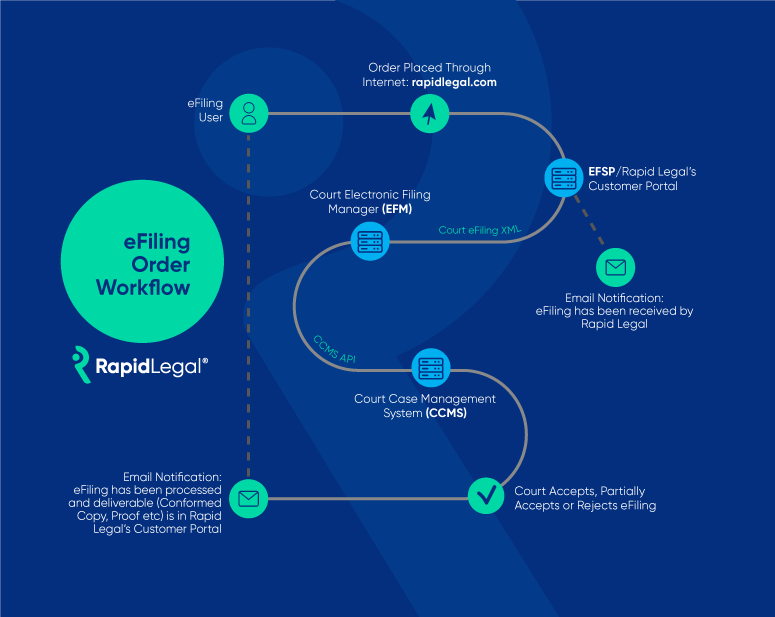
Legal Technology Definitions
ACH (Automated Clearing House) n.
1. A computerized network of participating financial institutions that process payment transactions and money transfers, typically of lower value. 2. A funds transfer system that enables electronic payment to payees in the United States. 3. The death knell of paper checks, cash, and wire transfers. 4. When traveling in Germany use “Ach” for “Ohhh!…”
API (Application Programming Interface) n.
1. A connection between computers that enables one application to serve another. 2. An intermediary layer between an application (e.g., Google Chrome or Firefox) and a web server (e.g. Apache HTTP Server) that processes data transfer between the two systems.
Cf. Want to see an API in action? Whip out your smartphone and use Google Maps. Or, if you’re into experiential learning, check out this demo for litigation support service software!
Cf. Spiders were the original web servers.

Analytics n.
1. Data sets that identify trends or specific occurrences. 2. The study of data patterns to identify to discover, interpret, or talk about what those patterns mean.
Cf. The world runs on analytics. Business transactions create a gazillion data points valuable to buyers and sellers. For example, data collected from orders, invoices, commissions, and payments can tell a business how it is performing at any given time, as well as how its customers are performing.
Artificial Intelligence n.
1. Digital systems that can accurately interpret external data, “learn” from that data, then use what has been learned to perform a task. 2. Machine learning. 3. Google Home and Siri are two examples of AI systems used in daily life. 4. In law practice, AI applications currently support tasks such as document review and rapid contract analysis.
Blockchain n.
1. A digital information technology designed to be tamper-proof. 2. An addition-only transaction record to which new information can be written but older information cannot be changed or removed.

CCMS (Court Case Management Software) n.
1. In California courts, the back-end system used by the courts where your documents become a permanent part of the court record. 2. Electronically-filed court documents enter the CCMS after they pass through the court’s electronic filing manager (EFM).
Cf. Courts are increasingly implementing court case management systems with eFiling. In turn, a greater number of law firms are eFiling their documents to maintain court compliance. This places a burden on legal support service providers to change the way they do business.
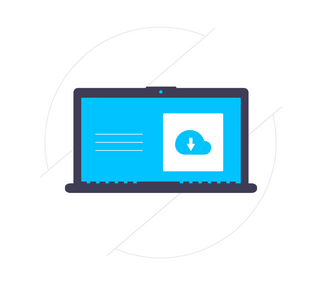
Cloud n.
1. Shapeless, vast network of servers that host data as well as provide data and resources to the online ecosystem. Oftentimes referred to as “the cloud.” 2. Place where the worst weather is born.
Cf. Litigation support service software operates in the cloud and enables business owners to equip EFSPs, process servers, and attorney services with the means to offer online services to their end-users.
Cf. See how litigation support service software syncs stakeholders with a workflow that effortlessly moves data-rich documents through an ecosystem of providers, law firms, and courts in this diagram.
CRM (Customer Relationship Management) system n.
1. A software tool, usually cloud-enabled, that helps an organization manage relationships with its customers, vendors, and other stakeholders. 2. Software that automates and scales activities related to customer interaction. 3. A system that stores and operationalizes information about customers and prospects.
Cf. Data from CRM systems are frequently used by sales teams and marketers to identify sales opportunities, understand the sales pipeline, and craft marketing campaigns.


Customer Portal n.
1. Within a litigation support service software platform, the application that end-user customers use to place and manage orders for various court services and process serving.
Litigation Support Performance Reports n.
1. Business intelligence generated by litigation support service software that provides cost and performance insights into key operations. 2. Data sets organized and presented by a business that provides a litigation support service software platform to organizations with which it does business (e.g., EFSPs). Data is pulled from sources such as customer orders and payments.
Cf. Law firms and corporate legal departments that have access to these reports can analyze their performance to run more efficiently and deliver greater satisfaction to their clients.
Cybersecurity n.
1. The totality of practices and technologies that defend wired and wireless technologies as well as networks from malicious attacks. 2. Electronic means of preventing unauthorized use of digital files.
Cf. Bank data and personal information have been longstanding targets of online hacking. However, in the last decade, attacks on APIs have become increasingly common because of the volume of web-based interactions that occur on them.

Dashboard n.
1. Digital control panel within a software platform from which a user manages all aspects of a business’ online-enabled work. 2. Control panel in an automobile that indicates whether the driver is speeding, about to run out of fuel, or needs air in the tires.
Digital Transformation v.
1. Process by which an organization embraces and adopts digital technology. 2. In most businesses and law firms this entails moving operations from analog and paper-based systems to online systems.
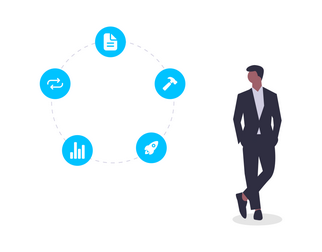
Integration n. v.
1. A connection that allows output from one program to be shared with other applications. Streaming a vendor’s billing information directly into a customer’s QuickBooks application is an example of software integration. 2. The process of connecting separate computer systems or device applications so they may share data.
Metaverse n.
1. Virtual environment accessed via the internet in which virtual reality, augmented reality, and other digital technologies create a multisensory experience. 2. A shared online network designed to facilitate social interaction, work, shopping, learning, and other activities.
Cf. What opportunities do law firms have in the Metaverse right now? It’s going to surprise you. Find out in this short article.
Operations Portal n.
1. The operational management application of a litigation support service software platform that centralizes customer, order, vendor, and finance information. Document specialists, or operators, of attorney service firms, use the operations portal to monitor and manage work for their customers.
Cf. An operations (“ops”) portal does a whole lot more than centralize order data. A good ops portal will include built-in back-office features that a litigation support service provider needs to manage vendors, billing, reporting, and more.

eCommerce n.
1. Broad term referencing the buying and selling of products and services online. Also denotes the transfer of money or data.
EFM (Electronic Filing Manager) n.
1. An intermediate system on the Court’s side that receives eFilings and processes them for the court clerks to view and manage. 2. The EFM connects to the court’s Case Management System (CMS). The current court tech structure in California requires every court to use an electronic filing manager (EFM) to manage its backend system.
End-to-End System n.
1. A technology solution for which all components (i.e., hardware and software) are provided, implemented, and maintained by a single vendor without the assistance of a third party.
File Extension n.
1. A suffix that appears at the end of a computer file name (typically separated by a period) that denotes the type of application associated with the file. (e.g., .doc, .jpg, .pdf) 2. A type of metadata that tells you what application will open when you double-click on the file.

Law Practice Management Software n.
1. Software that runs law firm operations. 2. Software systems built to streamline common administrative tasks such as calendaring, client intake, time keeping, billing, etc. Can be integrated with litigation support service software to help offices run more efficiently. 3. A tool that makes partners think you are a superhero and leads them to say things like, “I told the client we can do it in an hour. You can do it in an hour…right?”
Legal Technology n.
1. Also known as legal tech. A category of technology solutions or “IT tools” such as computers, software, and other integrated systems designed to support the legal profession and legal services industry. 2. Examples of legal technology include law practice management software, litigation support service software, court electronic filing managers, and court case management systems.
Litigation Support Service Software n.
1. Software that automates the processing of legal documents for law firms. 2. A cloud-based platform that delivers all the features and functionality that legal support service firms need to run a successful business.
Cf. Litigation support service software includes order and document management, automated document preparation, customer and vendor communication tools, billing, and reporting.
Payment Gateway n.
1. An online service that enables payment transactions between customers and providers, usually via credit card or direct payment processing. 2. A secure, e-commerce system that allows online payment from desktop computers, laptop computers, or mobile devices. 3. Coin slot in vending machines and arcade games.
Cf. Want a clear picture of how payment gateways work? This illustration makes it easy to understand.
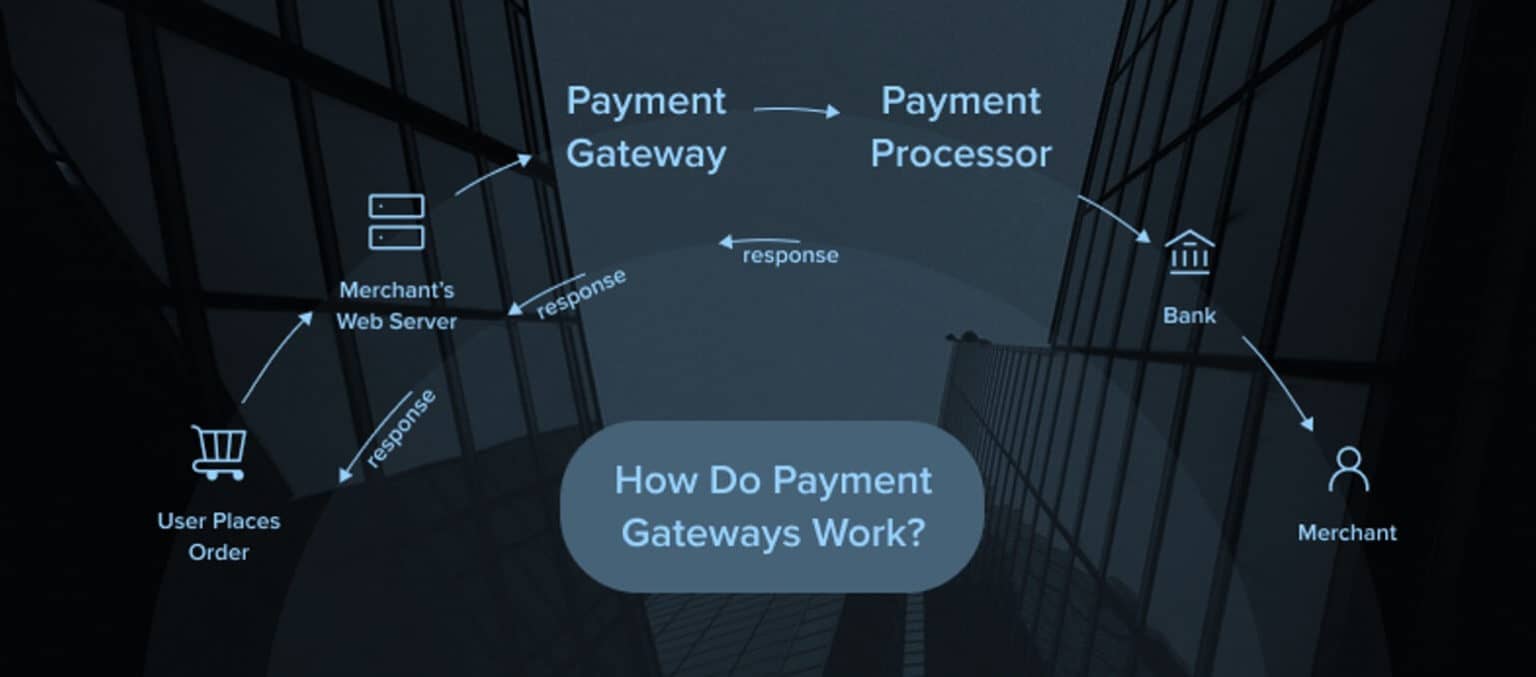
PDF Conversion n.
1. An application feature that changes a document’s original format to the portable document format (PDF). 2. Saving files such as Word, Excel, or Power Point as a PDF. 3. The act of one document format proselytizing another.
Cf. Court rules oftentimes require electronically filed documents to be submitted in PDF format, or to include attachments that are saved in PDF format.
Performance Metrics n.
1. Objective data collected from activities and behaviors that measure how well a business performs against predefined criteria. 2. Relative to law firms and businesses that provide services used by the legal industry these metrics may include eFiling success rates, service of process turnaround times, and service level distribution.
Cf. Ever have one of those days when your hair was on fire, your chair was on fire, your desk was on fire, everything was on fire, but you still made it out of the office at 5 p.m.? Performance metrics can tell you just how amazing you were that day.
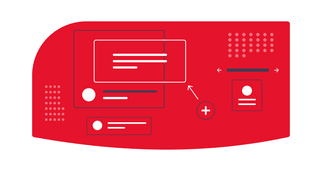
Platform n.
1. A software-based framework that can host applications and provide resources. 2. A set of goals, positions, and strategies politicians use to give voters a sense of what they believe in. 3. Technology providers and politicians can upgrade their platforms frequently as circumstances change.
Reconciliation n.
1. Process that compares two sets of records to confirm that figures are correct. Law offices reconcile expenses at the end of a case to be sure expenses paid on behalf of a client matter are correctly accounted for. 2. Law firms can integrate their in-house accounting system with a litigation support service provider’s system to automate reconciliation.
Cf. At some point you’ll have to reconcile the time you took to read this dictionary against time you could have spent doing other stuff. We hope you found it time well-spent and will share this page with colleagues.
Cf. If you want to learn more about how to bring eFiling into your law office use this information set up a demo or schedule a call.
Cf. Or, if you’re an attorney service and wondering whether litigation support service software can help grow your business, use this contact information to find out more.
Tech Stack n.
1. Also referred to as legal tech stack. The technology infrastructure a law firm, legal service provider, or legal service technology/software vendor uses to build its systems. 2. The aggregate of hardware (e.g., computers, servers, printers, etc.), software (typically cloud-based) and related technologies an organization uses to conduct operations.
Virtual Reality n.
1. Digital technology designed to provide users with an immersive experience in a variety of environments. 2. Frequently used with gaming applications that leverage head-mounted devices and motion sensors so users may interact with virtual environments. 3. Most reliable way currently available to interact with space aliens and Bigfoot.
